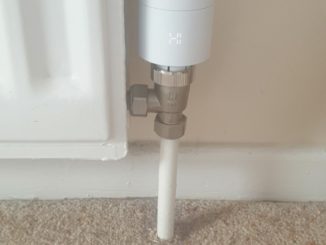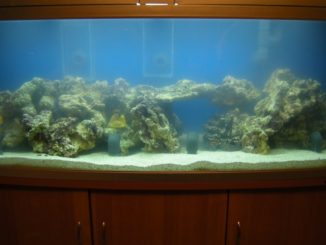With all the fish in place, the next step up is coral. There are two types generally stocked, soft Corals and Hard Corals – the soft ones are easier to look after, needing less light, they usually inhabit deeper areas of the reef. The hard corals are the really attractive types with tough exoskeletons that sit at the top of the reef exposed to direct constant sunlight throughout a day, and are as the name suggests harder to sustain!
I started with soft corals, there are a wide range of them, as seen in the video above. Some take the shape of a single entity (and I don’t know the names but the mushroom one you see. Others build up a field of smaller polyps such as the waving fronds above. Some thrived, the progression in photographs showing a tank of bare rock moving to one that is quite busy – though still plenty of gaps and algae.
All the corals are purchased as fragments or ‘frags’, at between £20 and £200 a piece – usually a small animal/plant rooted to a pebble.
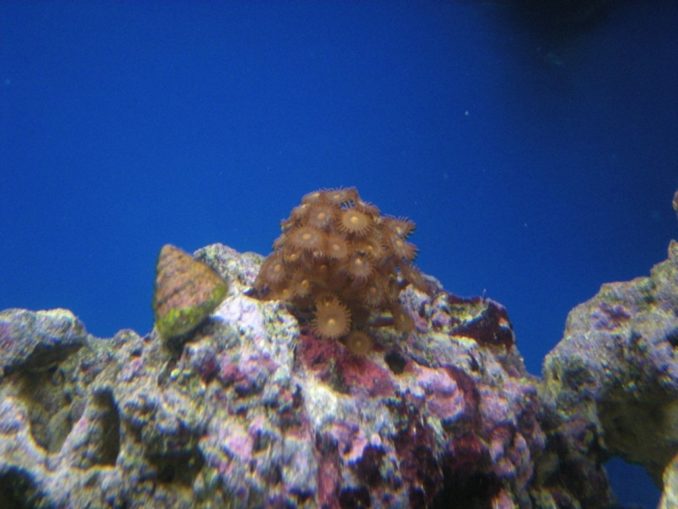
These frags, if sited well would quickly grow, split and spread over the rock.
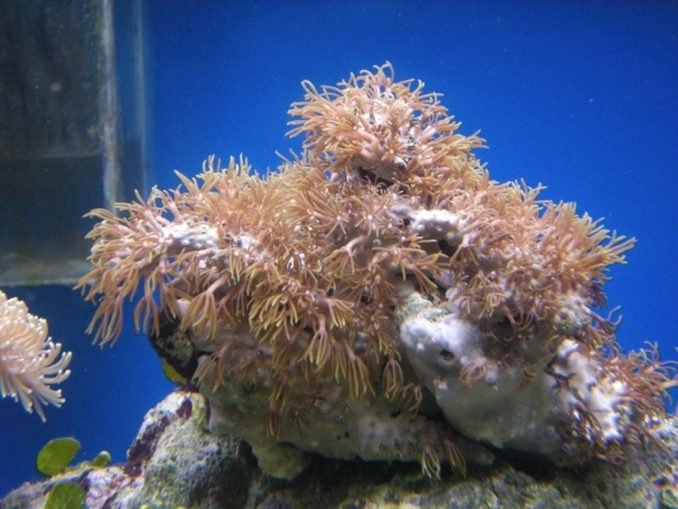

One that is visible in many of the photos and was always front and centre of the tank was the large mushroom one (Sarcophyton sp.).


As others it arrived as a fairly small item, but flourished. When feeding the top surface would be festooned with many suckers which retracted to a smooth surface when resting or under attack. All the soft corals tended to feed on passing detritus and the photosynthetic processes in the strong light. You could give them a boost with a supplementary feed of synthetic plankton – a dropper squirted into the current just upstream of them every week or two.
One or two came as unintended passengers with the live rock – the pink cabbage like growth front right on here being an example.
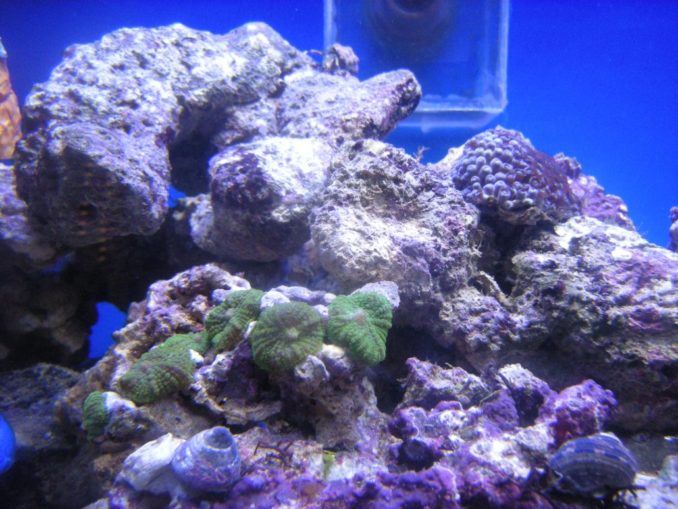
One last one, not sure of a name, perhaps more of an anemone? I don’t see it in many photos, so may have not lasted long.
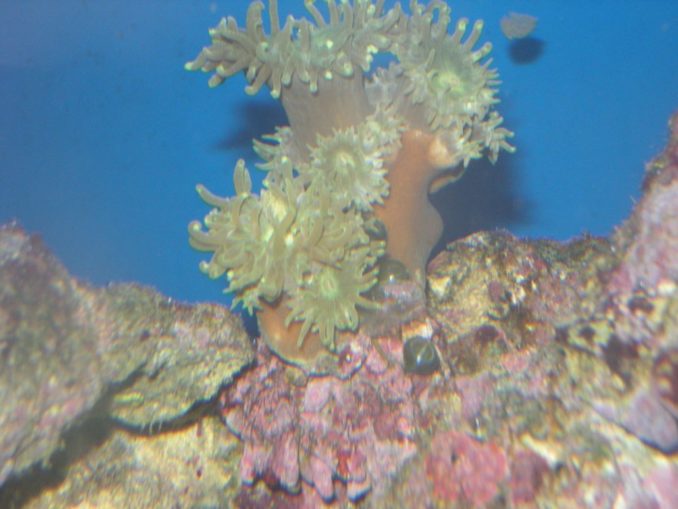
With those, the snails, the fish, the shrimps, the crabs, even the fantail worm happy, I did try a frag of hard coral. It was expensive and didn’t last more than three days. The reason? Not enough light. This tank was built in 2008, when LED lighting was in its infancy – you were still using old fashioned bulbs in your house and car and LEDs weren’t sufficiently powerful enough. I wasn’t going to have an open tank with halogen lights above due to the humidity and ugliness of seeing the water surface and tank elements designed to be hidden, so hard luck, no hard corals.
In the next and final instalment I cover weekly maintenance, cleaning, holidays and the ultimate fate of the tank.
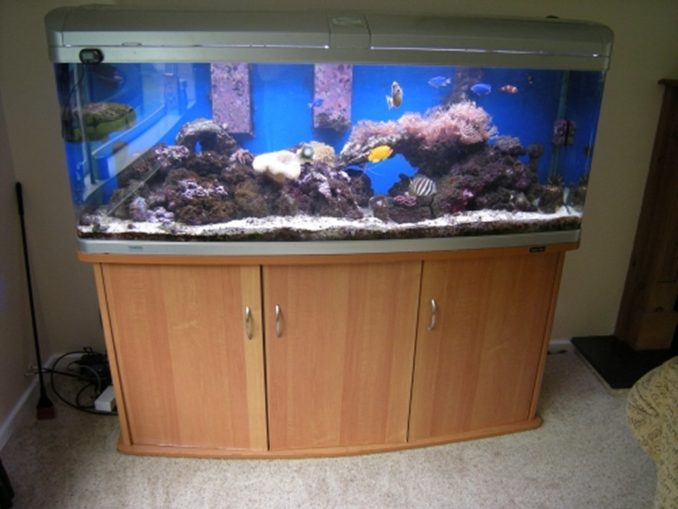
© text & images Sweaty Dave 2018
Audio file


